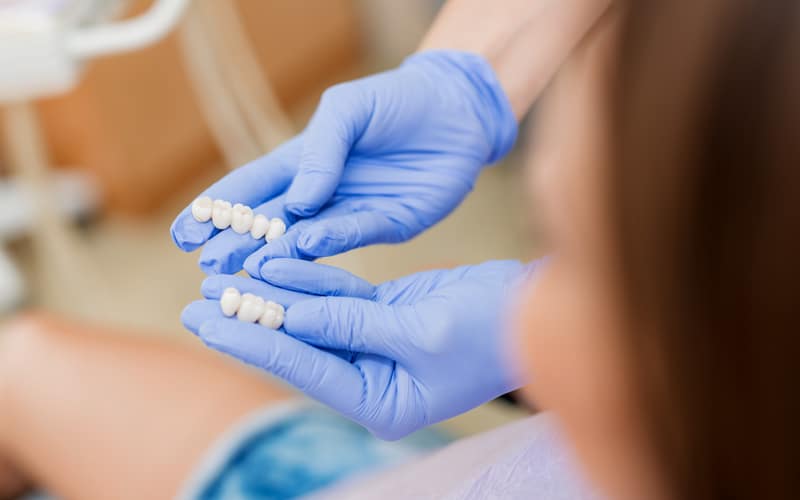Dental Crowns Near You
Tooth enamel is the strongest substance in the human body, however poor habits, health conditions, and injuries can cause the teeth to stain, chip and decay.

What is a Dental Crown?
A dental crown, often called a cap, can remedy a damaged tooth. A crown fits over a tooth and replaces the entire decayed portion of it.
When a crown is worn, it encases the tooth or dental implant. This restoration is typically bonded to the tooth using dental cement. A dental crown near you can be made from a variety of materials. The four different types of dental crowns in Livonia, MI 48152 include:
- Ceramic crowns (porcelain-based)
- Porcelain fused to metal crowns
- Gold alloys
- Base metal alloys

Who Needs Dental Crowns?
Dental crowns near you improve the strength or appearance of teeth. They can be used for the following reasons:
- To secure a dental bridge in place
- To repair a defective filling
- To cover a dental implant
- To strengthen a tooth
- To treat a tooth that is broken, fractured or decayed
- To improve the cosmetic appearance of a tooth

The Dental Crown Procedure
It may take two or more visits for a dentist to repair a severely decayed tooth with a crown. The first visit will consist of the following:
1. Tooth Numbing: Local anesthetic is used to numb the tooth, gums, tongue and surrounding skin. This allows the patient to feel comfortable throughout the procedure.
2. Impressions: Next, impressions of the tooth are taken in order for the dental lab to fabricate a crown with the perfect fit.
3. Tooth Preparation: The core underneath the tooth is reduced, which allows the crown to fit the tooth properly.
4. A Temporary Crown: The dentist will cover the tooth with a temporary crown until the permanent crown is completed.
During the second visit, the dentist will:
5. Cement the Permanent Crown: Once the permanent crown near you is created, the dentist will numb and clean the prepared tooth before cementing the crown.
6. Make Adjustments: After the crown is cemented, the dentist will ensure there is proper contact between the crown and adjacent teeth. The dentist may ask the patient to bite on a piece of carbon paper to determine how well the crown is positioned.
7. Make Final Touches: The final cementation will commence when the dentist is satisfied with the fit of the crown. First, they will isolate and keep the tooth dry from any conflicting materials. Next, they will apply bonding material to the tooth and use a curing light to set it. Lastly, they will floss the teeth to remove any excess cement between them and use a scaler to remove cement from around the tooth.
8. Check The Bite: Once the cement has been set, the dentist in Livonia, MI 48152 will check the bite of the patient to ensure it is in proper positioning.
